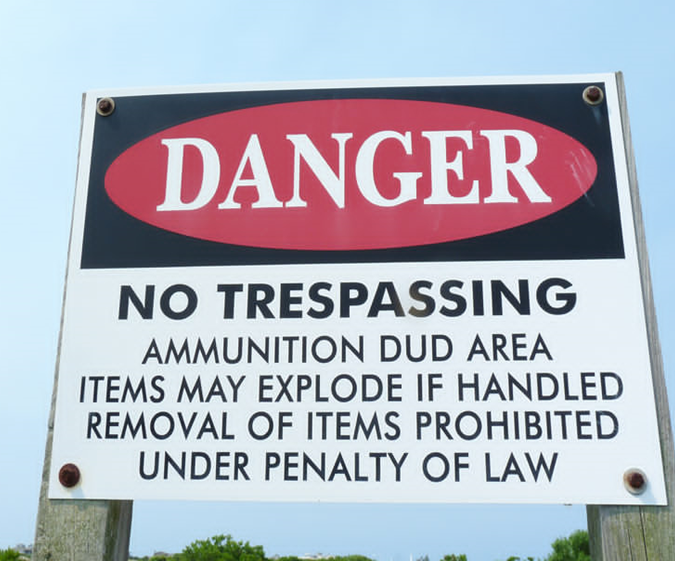TNT and plants: shrubs as toxin detectors
If you’ve been to many national forests, chances are you’ve seen signs like the one to the left: walk on this field and a land mine might explode. In her talk this morning at the ESA Annual Meting, Julie Naumann of the U.S. Army Corps of engineers explained that even if they don’t explode, these buried capsules of TNT and other explosives are bad news for plants.
Land mine capsules aren’t made to withstand weathering, and as a result, TNT powder can leach out of buried mines and into the soil. Naumann wanted to know what effects this leaching had on plant physiology. She raised individuals of common wax myrtle, a shrub that grows freely on land mine fields in coastal Virginia, and exposed their soil to a range of TNT concentrations. Not surprisingly, the plants showed significant signs of stress, including closing of stomates – tiny holes that act like plant nostrils — and reduced photosynthesis.
The stressed-out plants didn’t just keel over and die, though. All of the plants except for the ones exposed to the highest TNT concentration recovered their stomatal conductance, or the passage of gases and water through the plants’ stomates.
“A lot of the TNT is stored in the plants’ leaves,” said Naumann. “There, it’s metabolized into less toxic compounds.”
So, if the plants can suck up toxins in the soil, get sick for awhile, but then recover, could we use them as toxin filters in areas where soils are contaminated – in scientific terms, phytoremediation? In this case, Naumann doesn’t think so. She points out that you can’t just walk out onto a mine field to plant and water vegetation, and that doing so repeatedly by helicopter would be prohibitively expensive. But she does think that the plants could be good indicators of other toxins.
“Plants could be a useful tool for detecting anthropogenic stresses in soil,” she said.
